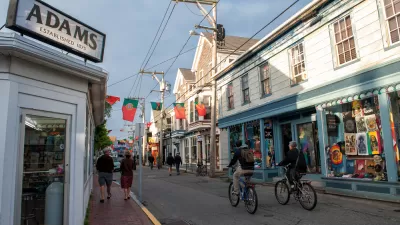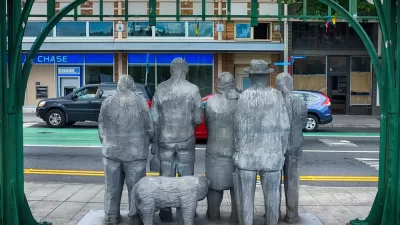Making streets, sidewalks safer for people with limited mobility.

By Jessica Zimmer
Before the City of Concord renovated its Main Street, residents and visitors had to walk up two steps to access the restaurants and storefronts along the western side of the road.
New Hampshire’s capital city eliminated the double-step curbs as part of a larger downtown complete streets project, which aimed to improve access for people with disabilities and spur economic development. The city also created additional handicapped parking spaces and converted a portion of the Main Street from four lanes to two lanes and added a six-foot center median to slow vehicles and reduce the distance for pedestrians crossing the busy street.
“We call Concord’s Main Street New Hampshire’s Main Street, and Concord’s downtown New Hampshire’s downtown,” Concord City Engineer Ed Roberge said. “Making Main Street more accessible is something in which the city takes great pride.”
Concord’s project is just one example of ways communities are trying to make streets and sidewalks more accessible for senior citizens and people with physical disabilities. Across North America, cities are employing different tactics including removing lanes of traffic, adding rest benches with shade and medians with greenery, installing raised crosswalks to slow traffic, working with businesses to build ramps and eliminating obstacles in sidewalks.
These measures are necessary to help avoid injury and inconvenience to the 18.2 million or 7.5 percent of adults in the United States that have extreme difficulty walking or are unable to walk a quarter mile. As the country’s population ages, an increasing percentage of Americans with disabilities are 55 and older.
One factor driving good design is the adoption of complete streets policies, a national initiative being spearheaded by Smart Growth America, a Washington, D.C. non-profit organization. Complete streets is an approach that advocates for transportation projects being planned, maintained and designed so all users can access the roadway.
Emiko Atherton, director of the National Complete Streets Coalition, a Smart Growth program, said one of complete streets’ goals is to eliminate traffic fatalities.
“You can design away a lot of behavior,” she said.
FULL STORY: Breaking Down Barriers

Alabama: Trump Terminates Settlements for Black Communities Harmed By Raw Sewage
Trump deemed the landmark civil rights agreement “illegal DEI and environmental justice policy.”

Planetizen Federal Action Tracker
A weekly monitor of how Trump’s orders and actions are impacting planners and planning in America.

The 120 Year Old Tiny Home Villages That Sheltered San Francisco’s Earthquake Refugees
More than a century ago, San Francisco mobilized to house thousands of residents displaced by the 1906 earthquake. Could their strategy offer a model for the present?

In Both Crashes and Crime, Public Transportation is Far Safer than Driving
Contrary to popular assumptions, public transportation has far lower crash and crime rates than automobile travel. For safer communities, improve and encourage transit travel.

Report: Zoning Reforms Should Complement Nashville’s Ambitious Transit Plan
Without reform, restrictive zoning codes will limit the impact of the city’s planned transit expansion and could exclude some of the residents who depend on transit the most.

Judge Orders Release of Frozen IRA, IIJA Funding
The decision is a victory for environmental groups who charged that freezing funds for critical infrastructure and disaster response programs caused “real and irreparable harm” to communities.
Urban Design for Planners 1: Software Tools
This six-course series explores essential urban design concepts using open source software and equips planners with the tools they need to participate fully in the urban design process.
Planning for Universal Design
Learn the tools for implementing Universal Design in planning regulations.
Clanton & Associates, Inc.
Jessamine County Fiscal Court
Institute for Housing and Urban Development Studies (IHS)
City of Grandview
Harvard GSD Executive Education
Toledo-Lucas County Plan Commissions
Salt Lake City
NYU Wagner Graduate School of Public Service





























